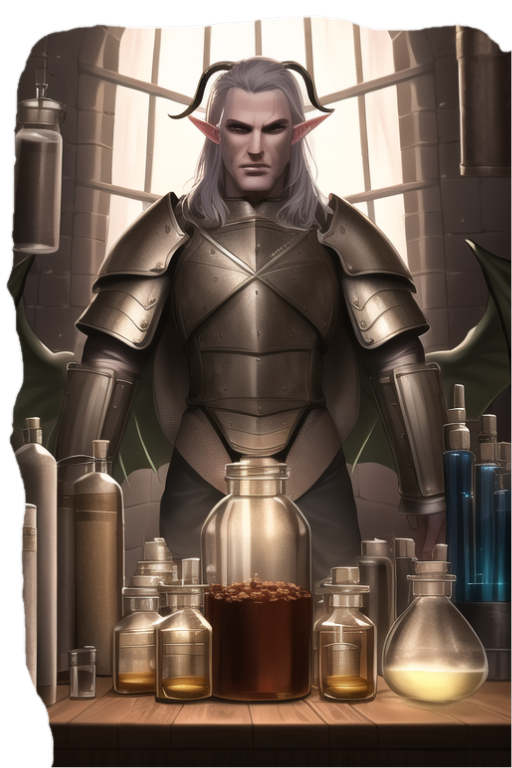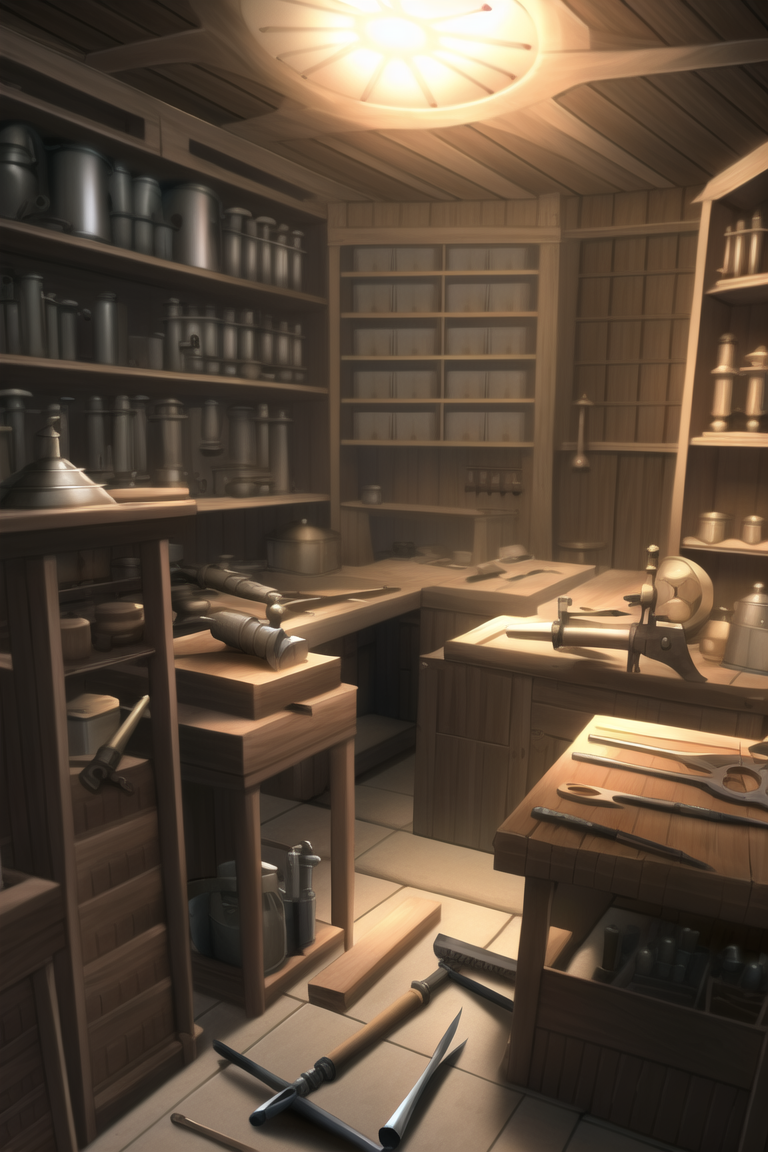
The Revised Artificer Subclasses
Introduction
Aim
My obsession with homebrewing everything also has lead me to touch on the Artificer. While the subclasses are not really that unbalanced with one another, 'Armourer' does stand a little above the other 3. Additionally, Artificer has basically gotten no love since its release so I will be including a couple new subclasses to add more variety.
Design
The changes that have been made will most likely be reworks and buffs with a few optional features since I normally play in heavily homebrewed campaigns. These abilities may be a little powerful for lower power level games. A lot of this is done in the form of a table with people who like optimization and giving those people more options to consider when creating a viable build. Also since I am British, I felt the need to translate all the subclasses into proper English, looking at you 'armorer' who looks so lost without a 'u'.
Key
The following table is a key for the subclass feature Section
| Symbol | Meaning |
|---|---|
| * | New |
| ! | Rework |
| ^ | Buff |
Document Layout
The subclasses are all listed alphabetically. In the features table for each subclass, the features may be prefixed with one of the symbols above. If it isn't, no change has been made to the ability. After the four default Subclasses there is two New ones; the Archivist, and the Biomancer.
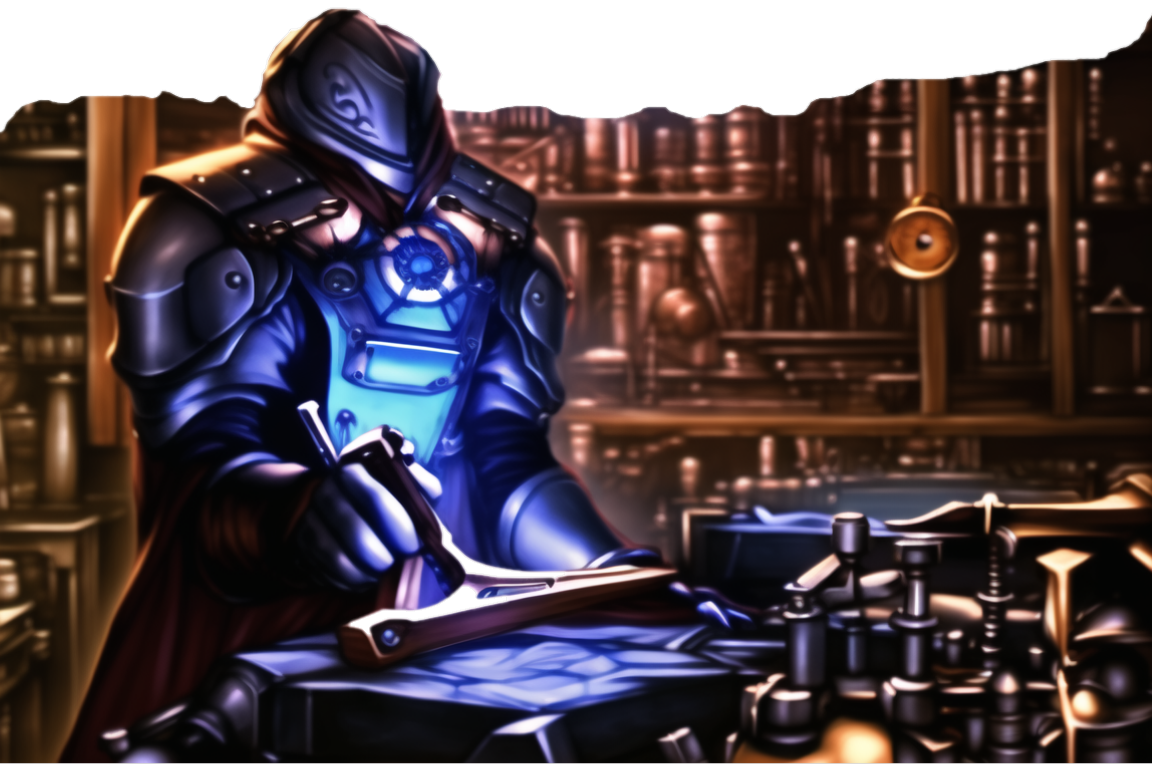
Alchemist
An Alchemist is an expert at combining reagents to produce mystical effects. Alchemists use their creations to give life and to leech it away. Alchemy is the oldest of artificer traditions, and its versatility has long been valued during times of war and peace.
Alchemist Features
| Alchemist Level | Features |
|---|---|
| 3rd | Tool Proficiency Alchemist Spells, (^)Experimental Elixir |
| 5th | Alchemical Savant |
| 9th | Restorative Reagents |
| 15th | Chemical Mastery |
Tool Proficiency
3rd-level Alchemist feature
You gain proficiency with alchemist’s supplies. If you already have this proficiency, you gain proficiency with one other type of artisan’s tools of your choice.
Alchemist Spells
3rd-level Alchemist feature
You always have certain spells prepared after you reach particular levels in this class, as shown in the Alchemist Spells table. These spells count as artificer spells for you, but they don’t count against the number of artificer spells you prepare.
Alchemist Spells
| Artificer Level | Spells |
|---|---|
| 3rd | Healing Word, Ray of Sickness |
| 5th | Flaming Sphere, Melf’s Acid Arrow |
| 9th | Gaseous Form, Mass Healing Word |
| 13th | Blight, Death Ward |
| 17th | Cloudkill, Raise Dead |
Experimental Elixir
3rd-level Alchemist feature
Whenever you finish a long rest, you can magically produce an experimental elixir in an empty flask you touch. Roll on the Experimental Elixir table for the elixir’s effect, which is triggered when someone drinks the elixir. As a bonus action, a creature can drink the elixir or as an action, administer it to an incapacitated creature.
You can create additional experimental elixirs by expending a spell slot of 1st level or higher for each one. When you do so, you use your action to create the elixir in an empty flask you touch, and you choose the elixir’s effect from the Experimental Elixir table.
Creating an experimental elixir requires you to have alchemist’s supplies on your person, and any elixir you create with this feature lasts until it is drunk or until the end of your next long rest.
When you reach certain levels in this class, you can make more elixirs at the end of a long rest: two at 6th level and three at 15th level. Roll for each elixir’s effect separately. Each elixir requires its own flask.
Experimental Elixir
| d6 | Effect |
|---|---|
| 1 | Healing. The drinker regains a number of hit points equal to 2d6 + your Intelligence modifier. |
| 2 | Swiftness. The drinker’s walking speed increases by 10 feet for 1 hour. |
| 3 | Resilience. The drinker gains a +1 bonus to AC for 1 hour. |
| 4 | Boldness. The drinker can roll a d4 and add the number rolled to every attack roll and saving throw they make for the next hour. |
| 5 | Flight. The drinker gains a flying speed of 10 feet for 1 hour. |
| 6 | Transformation. The drinker’s body is transformed as if by the alter self spell. The drinker determines the transformation caused by the spell, the effects of which last for 1 hour. |
Alchemical Savant
5th-level Alchemist feature
You've developed masterful command of magical chemicals, enhancing the healing and damage you create through them. Whenever you cast a spell using your alchemist’s supplies as the spellcasting focus, you gain a bonus to one roll of the spell. That roll must restore hit points or be a damage roll that deals acid, fire, necrotic, or poison damage, and the bonus equals your Intelligence modifier (minimum of +1).
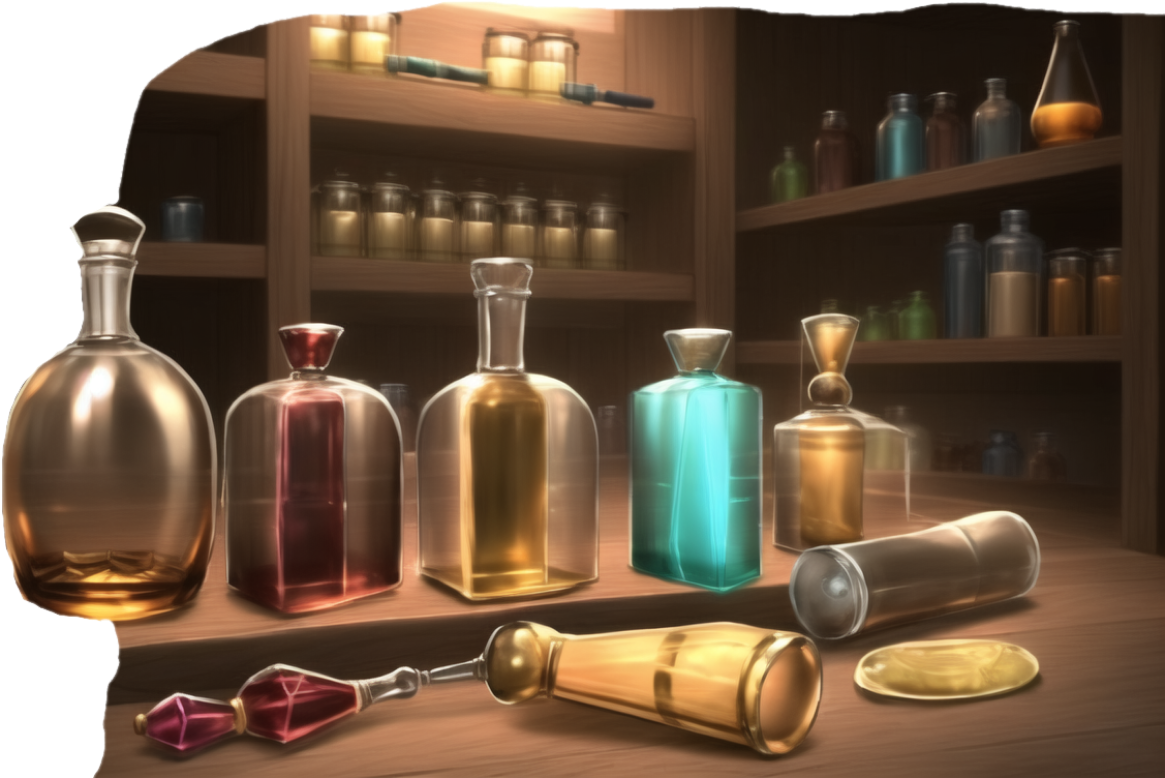
Restorative Reagents
9th-level Alchemist feature
You can incorporate restorative reagents into some of your works:
- Whenever a creature drinks for an experimental elixir you created, the creature gains temporary hit points equal to 2d6 + your Intelligence modifier (minimum of 1 temporary hit point).
- You can cast lesser restoration without expending a spell slot and without preparing the spell, provided you use alchemist’s supplies as the spellcasting focus. You can do so a number of times equal to your Intelligence modifier (minimum of once), and you regain all expended uses when you finish a long rest.
Chemical Mastery
15th-level Alchemist feature
You have been exposed to so many chemicals that they pose little risk to you, and you can use them to quickly end certain ailments:
- You gain resistance to acid damage and poison damage, and you are immune to the poisoned condition.
- You can cast greater restoration and heal without expending a spell slot, without preparing the spell, and without material components, provided you use alchemist’s supplies as the spellcasting focus. Once you cast either spell with this feature, you can’t cast that spell with it again until you finish a long rest.
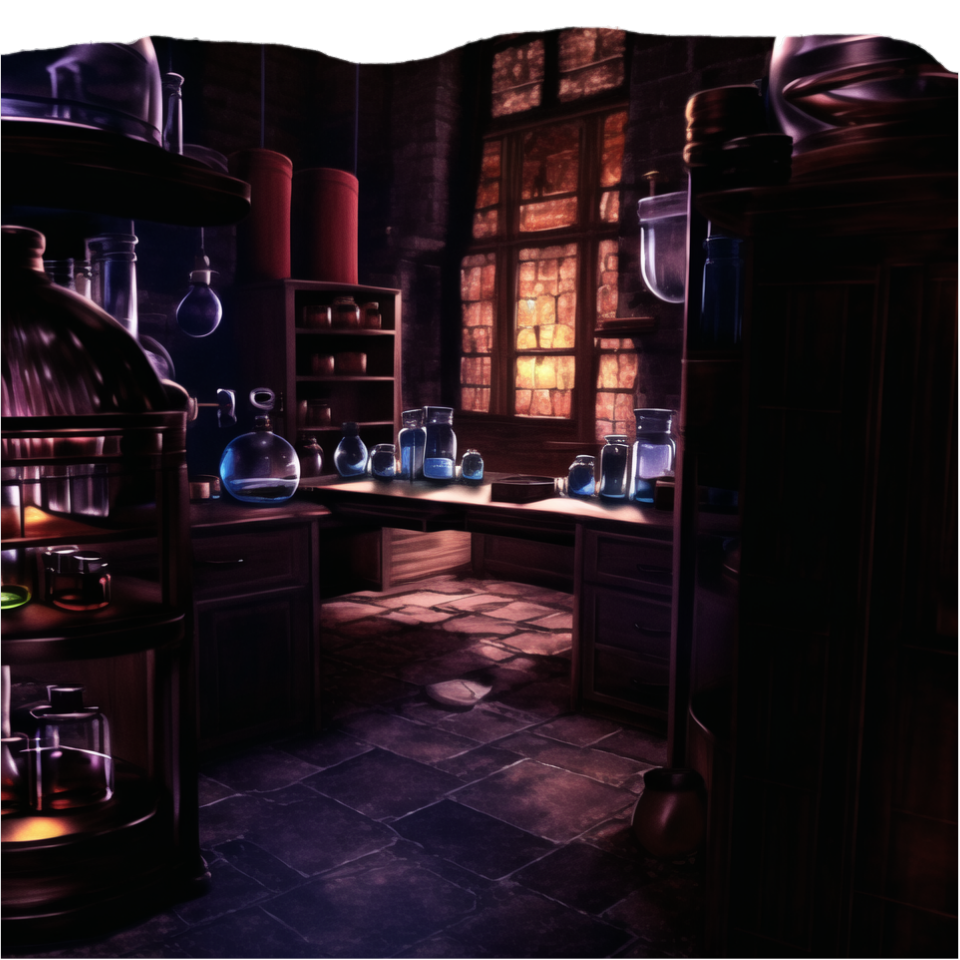
Armourer
An artificer who specializes as an Armorer modifies armor to function almost like a second skin. The armor is enhanced to hone the artificer’s magic, unleash potent attacks, and generate a formidable defense. The artificer bonds with this armor, becoming one with it even as they experiment with it and refine its magical capabilities.
Armourer Features
| Artificer Level | Features |
|---|---|
| 3rd | Tools of the Trade Armourer Spells, Arcane Armour (^)Armour Model |
| 5th | Extra Attackt |
| 9th | Armour Modifications |
| 15th | Perfected Armour |
Tools of the Trade
3rd-level Armourer feature
You gain proficiency with heavy armour. You also gain proficiency with smith’s tools. If you already have this tool proficiency, you gain proficiency with one other type of artisan’s tools of your choice.
Armourer Spells
3rd-level Armourer feature
You always have certain spells prepared after you reach particular levels in this class, as shown in the Armourer Spells table. These spells count as artificer spells for you, but they don’t count against the number of artificer spells you prepare.
Armourer Spells
| Artificer Level | Spells |
|---|---|
| 3rd | Magic Missile, Thunderwave |
| 5th | Mirror Image, Shatter |
| 9th | Hypnotic Pattern, Lightning Bolt |
| 13th | Fire Shield, Greater Invisibility |
| 17th | Passwall, Wall of Force |
Arcane Armour
3rd-level Armourer feature
Your metallurgical pursuits have led to you making armour a conduit for your magic. As an action, you can turn a suit of armour you are wearing into Arcane Armor, provided you have smith’s tools in hand.
You gain the following benefits while wearing this armour:
- If the armour normally has a Strength requirement, the arcane armour lacks this requirement for you.
- You can use the arcane armour as a spellcasting focus for your artificer spells.
- The armour attaches to you and can’t be removed against your will. It also expands to cover your entire body, although you can retract or deploy the helmet as a bonus action. The armour replaces any missing limbs, functioning identically to a limb it replaces.
- You can doff or don the armour as an action.
- The armour continues to be Arcane Armor until you don another suit of armour or you die.
Armour Model
3rd-level Armourer feature
You can customize your Arcane Armour. When you do so, choose one of the following armour models: Guardian or Infiltrator. The model you choose gives you special benefits while you wear it.
Each model includes a special weapon. When you attack with that weapon, you can add your Intelligence modifier, instead of Strength or Dexterity, to the attack and damage rolls.
You can change the armour’s model whenever you finish a short or long rest, provided you have smith’s tools in hand.
Guardian
You design your armour to be in the front line of conflict. It has the following features:
-
Thunder Gauntlets. Each of the armour’s gauntlets counts as a simple melee weapon while you aren’t holding anything in it, and it deals 1d8 thunder damage on a hit. A creature hit by the gauntlet has disadvantage on attack rolls against targets other than you until the start of your next turn, as the armour magically emits a distracting pulse when the creature attacks someone else. The damage increases when you reach certain levels in this class, to 2d8 at 9th level and 3d8 at 15th level.
-
Sturdy Construction. You gain a +1 to your AC and to your saving throws. The bonus increases when you reach certain levels in this class, to +2 at 9th level and +3 at 15th level.
-
Defensive Field. As a bonus action, you can gain temporary hit points equal to four times your level in this class, replacing any temporary hit points you already have. You lose these temporary hit points if you doff the armour. You can use this bonus action a number of times equal to your proficiency bonus, and you regain all expended uses when you finish a long rest.
Infiltrator
You customize your armour for subtle undertakings. It has the following features:
-
Lightning Launcher. A gemlike node appears on one of your armoured fists or on the chest (your choice). It counts as a simple ranged weapon, with a normal range of 90 feet and a long range of 300 feet, and it deals 1d6 lightning damage on a hit. Once on each of your turns when you hit a creature with it, you can deal an extra 1d6 lightning damage to that target. Both the initial damage and the extra damage increases when you reach certain levels in this class, to 2d6 at 9th level and 3d6 at 15th level.
-
Powered Steps. Your walking speed increases by 5 feet. Your speed increases again when you reach certain levels in this class, to 10 feet at 9th level and 15 feet at 15th level.
-
Dampening Field. You have advantage on Dexterity (Stealth) checks. If the armour normally imposes disadvantage on such checks, the advantage and disadvantage cancel each other, as normal.
Extra Attack
5th-level Armourer feature
You can attack twice, rather than once, whenever you take the Attack action on your turn.
Armour Modifications
9th-level Armourer feature
You learn how to use your artificer infusions to specially modify your Arcane Armor. That armour now counts as separate items for the purposes of your Infuse Items feature: armour (the chest piece), boots, helmet, and the armour’s special weapon. Each of those items can bear one of your infusions, and the infusions transfer over if you change your armour’s model with the Armor Model feature. In addition, the maximum number of items you can infuse at once increases by 2, but those extra items must be part of your Arcane Armor.
Perfected Armour
15th-level Armourer feature
Your Arcane Armour gains additional benefits based on its model, as shown below.
Guardian
When a Huge or smaller creature you can see ends its turn within 30 feet of you, you can use your reaction to magically force the creature to make a Strength saving throw against your spell save DC, pulling the creature up to 30 feet toward you to an unoccupied space. If you pull the target to a space within 5 feet of you, you can make a melee weapon attack against it as part of this reaction.
You can use this reaction a number of times equal to your proficiency bonus, and you regain all expended uses of it when you finish a long rest.
Infiltrator
Any creature that takes lightning damage from your Lightning Launcher glimmers with magical light until the start of your next turn. The glimmering creature sheds dim light in a 5-foot radius, and it has disadvantage on attack rolls against you, as the light jolts it if it attacks you. In addition, the next attack roll against it has advantage, and if that attack hits, the target takes an extra 1d6 lightning damage.
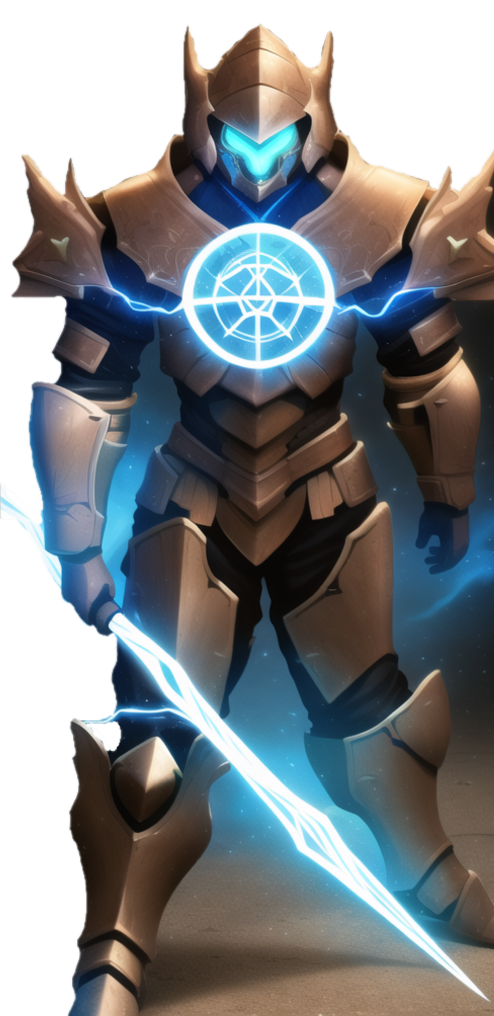
Artillerist
An Artillerist specializes in using magic to hurl energy, projectiles, and explosions on a battlefield. This destructive power is valued by armies in the wars on many different worlds. And when war passes, some members of this specialization seek to build a more peaceful world by using their powers to fight the resurgence of strife. The world-hopping gnome artificer Vi has been especially vocal about making things right: “It’s about time we fixed things instead of blowing them all to hell.”
Artillerist Features
| Artificer Level | Features |
|---|---|
| 3rd | Tool Proficiency Artillerist Spells, Eldritch Cannon |
| 5th | (^)Arcane Firearm |
| 9th | (^)Explosive Cannon |
| 15th | (^)Fortified Position |
Tool Proficiency
3rd-level Artillerist feature
You gain proficiency with woodcarver’s tools. If you already have this proficiency, you gain proficiency with one other type of artisan’s tools of your choice.
Armourer Spells
3rd-level Artillerist feature
You always have certain spells prepared after you reach particular levels in this class, as shown in the Artillerist Spells table. These spells count as artificer spells for you, but they don’t count against the number of artificer spells you prepare.
Armourer Spells
| Artificer Level | Spells |
|---|---|
| 3rd | Shield, Thunderwave |
| 5th | Scorching Ray, Shatter |
| 9th | Fireball, Wind Wall |
| 13th | Ice Storm, Wall of Fire |
| 17th | Cone of Cold, Wall of Force |
Eldritch Cannon
3rd-level Artillerist feature
You've learned how to create a magical cannon. Using woodcarver’s tools or smith’s tools, you can take an action to magically create a Small or Tiny eldritch cannon in an unoccupied space on a horizontal surface within 5 feet of you. A Small eldritch cannon occupies its space, and a Tiny one can be held in one hand.
Once you create a cannon, you can’t do so again until you finish a long rest or until you expend a spell slot to create one. You can have only one cannon at a time and can’t create one while your cannon is present.
The cannon is a magical object. Regardless of size, the cannon has an AC of 18 and a number of hit points equal to five times your artificer level. It is immune to poison damage and psychic damage. If it is forced to make an ability check or a saving throw, treat all its ability scores as 10 (+0). If the mending spell is cast on it, it regains 2d6 hit points. It disappears if it is reduced to 0 hit points or after 1 hour. You can dismiss it early as an action.
When you create the cannon, you determine its appearance and whether it has legs. You also decide which type it is, choosing from the options on the Eldritch Cannons table. On each of your turns, you can take a bonus action to cause the cannon to activate if you are within 60 feet of it. As part of the same bonus action, you can direct the cannon to walk or climb up to 15 feet to an unoccupied space, provided it has legs.
Eldritch Cannons
| Cannon | Activation |
|---|---|
| Flamethrower | The cannon exhales fire in an adjacent 15-foot cone that you designate. Each creature in that area must make a Dexterity saving throw against your spell save DC, taking 2d8 fire damage on a failed save or half as much damage on a successful one. The fire ignites any flammable objects in the area that aren’t being worn or carried. |
| Force Ballista | Make a ranged spell attack, originating from the cannon, at one creature or object within 120 feet of it. On a hit, the target takes 2d8 force damage, and if the target is a creature, it is pushed up to 5 feet away from the cannon. |
| Protector | The cannon emits a burst of positive energy that grants itself and each creature of your choice within 10 feet of it a number of temporary hit points equal to 1d8 + your Intelligence modifier (minimum of +1). |
Arcane Firearm
5th-level Artillerist feature
You know how to turn a wand, staff, or rod into an arcane firearm, a conduit for your destructive spells. When you finish a long rest, you can use woodcarver’s tools to carve special sigils into a wand, staff, or rod and thereby turn it into your arcane firearm. The sigils disappear from the object if you later carve them on a different item. The sigils otherwise last indefinitely.
You can use your arcane firearm as a spellcasting focus for your artificer spells. When you cast an artificer spell through the firearm, roll a d8, and you gain a bonus to the spell’s damage or healing equal to the number rolled.
Explosive Cannon
9th-level Artillerist feature
Every eldritch cannon you create is more destructive:
- The cannon’s effect rolls all increase by 1d8.
- As an action, or as a reaction when your cannon is reduced to 0 hit points, you can command the cannon to detonate if you are within 60 feet of it. Doing so destroys the cannon and forces each creature within 20 feet of it to make a Dexterity saving throw against your spell save DC, taking 5d8 force damage on a failed save or half as much damage on a successful one.
Fortified Position
15th-level Artillerist feature
You’re a master at forming well-defended emplacements using Eldritch Cannon:
- You and your allies have half cover while within 10 feet of a cannon you create with Eldritch Cannon, as a result of a shimmering field of magical protection that the cannon emits.
- You can now have two cannons at the same time. You can create two with the same action (but not the same spell slot), and you can activate both of them with the same bonus action. You determine whether the cannons are identical to each other or different. You can’t create a third cannon while you have two.
- The rolls for the effects of your eldritch cannon increase by another 1d8.
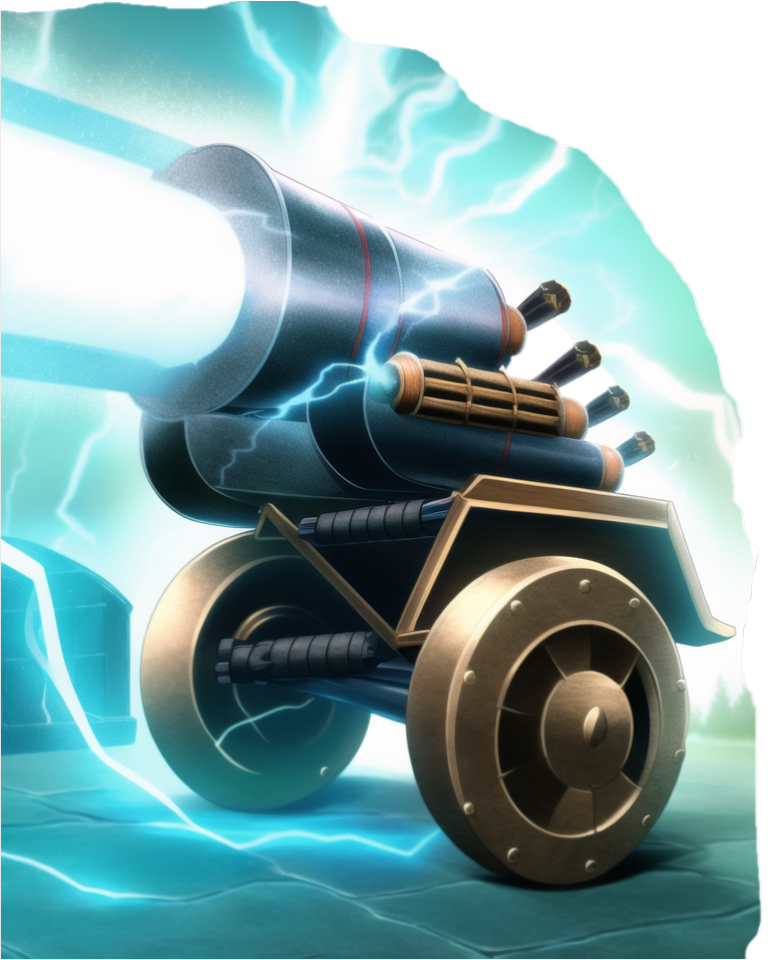
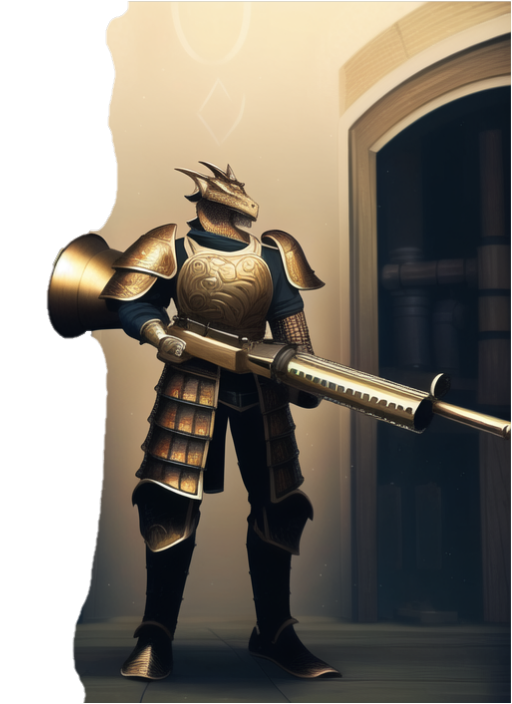
Battle Smith
Armies require protection, and someone has to put things back together if defences fail. A combination of protector and medic, a Battle Smith is an expert at defending others and repairing both material and personnel. To aid in their work, Battle Smiths are usually accompanied by a steel defender, a protective companion of their own creation. Many soldiers tell stories of nearly dying before being saved by a Battle Smith and a steel defender.
In the world of Eberron, Battle Smiths played a key role in House Cannith’s work on battle constructs and the original warforged, and after the Last War, these artificers led efforts to aid those who were injured in the war’s horrific battles.
Artillerist Features
| Artificer Level | Features |
|---|---|
| 3rd | Tool Proficiency (^*)Battle Smith Spells, Battle Ready, (^)Steel Defender |
| 5th | Extra Attack |
| 9th | (^)Arcane Jolt |
| 15th | (^)Improved Defender |
*Spell list is indirectly buffed due to changes to smite spells and conjure barrage
Tool Proficiency
3rd-level Battle Smith feature
You gain proficiency with smith’s tools. If you already have this proficiency, you gain proficiency with one other type of artisan’s tools of your choice.
Battle Smith Spells
3rd-level Battle Smith feature
You always have certain spells prepared after you reach particular levels in this class, as shown in the Battle Smith Spells table. These spells count as artificer spells for you, but they don’t count against the number of artificer spells you prepare.
Battle Smith Spells
| Artificer Level | Spells |
|---|---|
| 3rd | Heroism, Shield |
| 5th | Branding Smite, Warding Bond |
| 9th | Aura of Vitality, Conjure Barrage |
| 13th | Aura of Purity, Fire Shield |
| 17th | Banishing Smite, Mass Cure Wounds |
Battle Ready
3rd-level Battle Smith feature
Your combat training and your experiments with magic have paid off in two ways:
- You gain proficiency with martial weapons.
- When you attack with a magic weapon, you can use your Intelligence modifier, instead of Strength or Dexterity modifier, for the attack and damage rolls.
Steel Defender
3rd-level Battle Smith feature
Your tinkering has borne you a faithful companion, a steel defender. It is friendly to you and your companions, and it obeys your commands. See this creature’s game statistics in the Steel Defender stat block, which uses your proficiency bonus (PB) in several places. You determine the creature’s appearance and whether it has two legs or four; your choice has no effect on its game statistics.
In combat, the defender shares your initiative count, but it takes its turn immediately after yours. It can move and use its reaction on its own, but the only action it takes on its turn is the Dodge action, unless you take a bonus action on your turn to command it to take another action. That action can be one in its stat block or some other action. If you are incapacitated, the defender can take any action of its choice, not just Dodge.
If the mending spell is cast on it, it regains 2d6 hit points. If it has died within the last hour, you can use your smith’s tools as an action to revive it, provided you are within 5 feet of it and you expend a spell slot of 1st level or higher. The steel defender returns to life after 1 minute with all its hit points restored.
At the end of a long rest, you can create a new steel defender if you have your smith’s tools with you. If you already have a steel defender from this feature, the first one immediately perishes. The defender also perishes if you die.
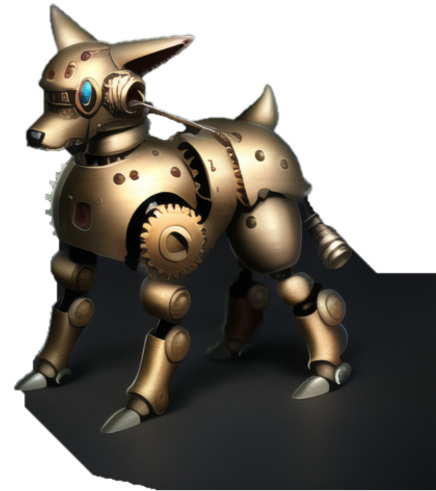
Steel Defender
Medium construct
- Armor Class 13 + PB (natural armour)
- Hit Points 2 + your Intelligence modifier + five times your artificer level (the defender has a number of Hit Dice [d8s] equal to your artificer level)
- Speed 40 ft.
STR DEX CON INT WIS CHA 14 (+2) 12 (+1) 14 (+2) 4 (-3) 10 (10) 6 (-2)
- Saving Throws Dex +1 plus PB, Con +2 plus PB
- Skills Athletics +2 plus PB, Perception PB x 2
- Damage Immunities Poison
- Condition Immunities Charmed, Exhaustion, Poisoned
- Senses darkvision 60 ft., passive Perception 10 + (PB × 2)
- Languages understands the languages you speak
- Challenge — Proficiency Bonus (PB) equals your bonus
Actions
Force-Empowered Rend. Melee Weapon Attack: your spell attack modifier to hit, reach 5 ft., one target you can see. Hit: 1d8 + PB force damage.
Repair (3/Day). The magical mechanisms inside the defender restore 2d8 + PB hit points to itself or to one construct or object within 5 feet of it.
Reaction
Deflect Attack. The defender imposes disadvantage on the attack roll of one creature it can see that is within 5 feet of it, provided the attack roll is against a creature other than the defender.
Extra Attack
5th-level Battle Smith feature
You can attack twice, rather than once, whenever you take the Attack action on your turn.
Arcane Jolt
9th-level Battle Smith feature
You've learned new ways to channel arcane energy to harm or heal. When either you hit a target with a magic weapon attack or your steel defender hits a target, you can channel magical energy through the strike to create one of the following effects:
- The target takes an extra 2d8 force damage.
- Choose one creature or object you can see within 30 feet of the target. Healing energy flows into the chosen recipient, restoring 2d8 hit points to it.
You can use this energy a number of times equal to your proficiency bonus + your Intelligence modifier (minimum of once). You regain all expended uses when you finish a long rest.
Improved Defender
*15th-level Battle Smith feature/
Your Arcane Jolt and steel defender become more powerful:
- The extra damage and the healing of your Arcane Jolt both increase to 4d8.
- Your steel defender gains a +3 bonus to Armor Class.
- Whenever your steel defender uses its Deflect Attack, the attacker takes force damage equal to 1d8 + your Intelligence modifier.
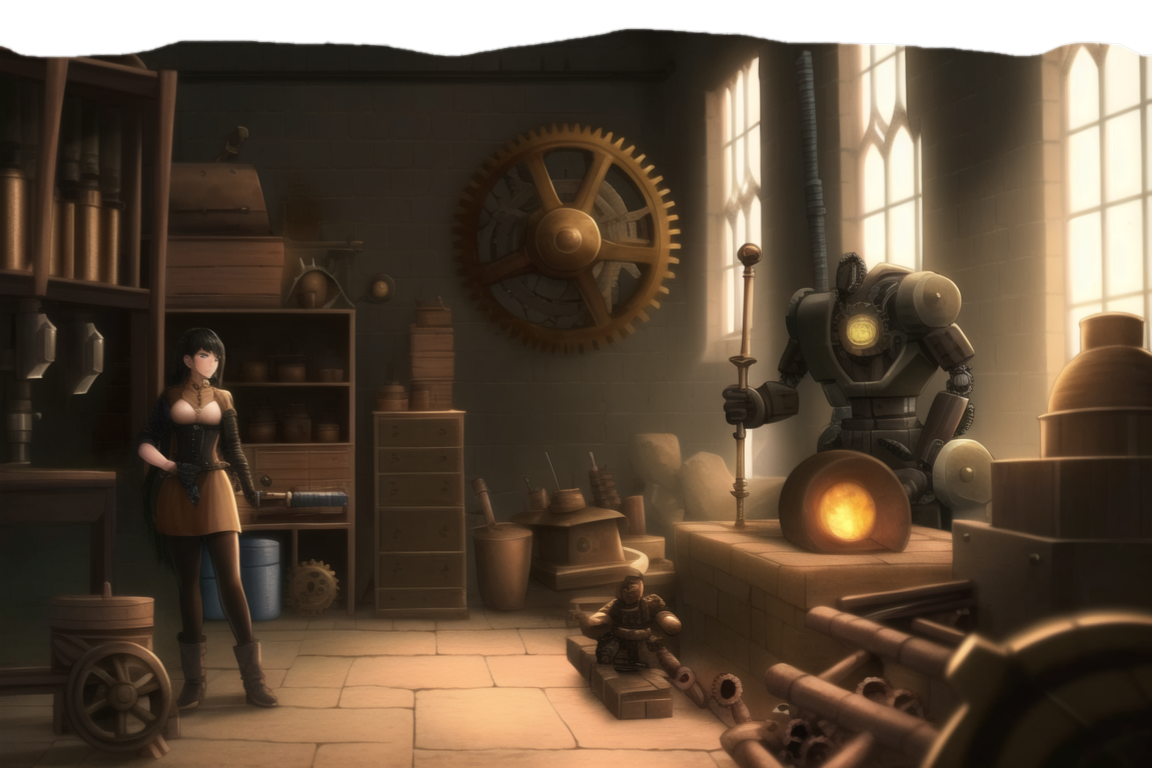
New Artificer Subclasses
Archivist
Archivists are masters of knowledge, relying not on books or tomes or scrolls, but first hand accounts from those involved. Why spend decades hunting for the truth behind an ancient stone when you can ask the stone. Archivists have perfected the art of creating Artificial minds inside ordinary objects.
Archivist Features
| Artificer Level | Features |
|---|---|
| 3rd | Tool Proficiency Archivist Spells, Artificial Mind |
| 5th | Mind Network |
| 9th | Shielded Mind |
| 15th | Psionic Expertise |
Tool Proficiency
3rd-level Archivist feature
You gain proficiency with calligrapher's supplies. If you already have this proficiency, you gain proficiency with one other type of artisan’s tools of your choice.
Archivist Spells
3rd-level Archivist feature
You always have certain spells prepared after you reach particular levels in this class, as shown in the Archivist Spells table. These spells count as artificer spells for you, but they don’t count against the number of artificer spells you prepare.
Archivist Spells
| Artificer Level | Spells |
|---|---|
| 3rd | Comprehend Languages, Dissonant Whispers |
| 5th | Crown of Madness, Detect Thoughts |
| 9th | Fear, Tongues |
| 13th | Confusion, Phantasmal Killer |
| 17th | Legend Lore, Modify Memory |
Artificial Mind
3rd-level Archivist feature
When you finish a long rest and have your Calligrapher's Supplies on your person, you can touch a Tiny nonmagical object on which you inscribe arcane runes. You awaken an artificial mind within the object. The object is considered magical while the mind is awakened inside it, and you can use it as a spellcasting focus. This magical object has the following properties:
- Psionic Link. The Artificial Mind provides you insight and information about the world around you: while the item is on your person. You gain proficiency in two skills of your choice of a list that is determined from the primary material of the Artificial Mind: Animal (leather, bone); animal handling, insight, medicine, perception or survival. Mineral (glass, stone, metal); deception, intimidation, performance, or persuasion. Plant (paper, wood): arcana, history, investigation, nature, or religion.
- Information Overload. As an action while your artificial mind is on your person, you can magically overload the mind of a creature you can see within 30 feet, flooding its head with information from your artificial mind. The creature must make an Intelligence saving throw against your spell save DC, the target takes 1d8 psychic damage on a failed save or half as much on a successful save. The damage increases by 1d8 when you reach 5th level (2d8), 9th level (3d8), and 15th level (4d8) in this class. Whenever you use this feature you can expend a spell slot to deal extra damage to the target. The extra damage 2d8 for a 1st-level spell slot, plus 1d8 for each spell level above 1st, to a maximum of 5d8 extra damage.
Mind Network
5th-level Archivist feature
You've mastered the connections between your mind and others, whether for better or worse. While your Artificial Mind is on your person you gain the following benefits:
-
Psychic Nexus. You can telepathically communicate with anyone carrying one of your artificer infusions. Creatures can also communicate with you or anyone else bearing an infusion. This link cannot surpass 100 miles or planar boundaries.
-
Psychic Damage. When you deal psychic damage with an artificer spell or Archivist Feature, you gain a bonus to the damage roll equal to your Intelligence modifier (minimum of +1).
Shielded Mind
9th-level Archivist feature
Your mind becomes strong enough to defend against many assaults against it. You gain the following benefits:
- Psychic Defence. You gain resistance to psychic damage.
- Intrusion Protection. You have advantage on saving throws against being charmed, frightened or effects that would read your thoughts.
Psionic Expertise
15th-level Archivist feature
You can manipulate your Artificial mind to grant more than just information:
- Infoportation. As an action while your Artificial Mind is on your person, you can teleport yourself and your belongings to the nearest unoccupied space to a creature carrying one of your artificer infusions as long as you are on the same plane of existence. When you do so you can bring along a number of creatures and their belongings within 5 feet of you equal to your Intelligence modifier. You can teleport this way once and must finish a long rest before doing so again, unless you expend a spell slot of 3rd or higher to do so.
- Psionic Barrier. When you deal psychic damage to creature, you may choose to gain temporary hit points equal to the damage dealt. You can do this a number of times equal to your Intelligence modifier (minimum of once), and regain all expended uses when you finish a long rest.

Biomancer
Biomancers are artificers who have turned their skills to self-improvement in the most literal sense, reshaping their own bodies, or the bodies of others to grant powerful atypical augmentations. Most still view this craft as unnatural, especially those of faith who see it as nothing more that tarnishing the God's creations; because of this many biomancers are outcast from society, or live a life in secret for fear of public outrage. That being said, in times of war, some kingdoms have been known to employ the help of these mad scientists to create legions of super solders to give them an edge in battle.
Biomancer Features
| Artificer Level | Features |
|---|---|
| 3rd | Tool Proficiency Biomancer Spells, Biomodification |
| 5th | Potent Augmentations |
| 9th | Additional Augmentations |
| 15th | Master of Modification |
Tool Proficiency
3rd-level Biomancer feature
You gain proficiency with leatherworker's tools. If you already have this tool proficiency, you gain proficiency with one other type of artisan’s tools of your choice.
Biomancer Spells
3rd-level Biomancer feature
You always have certain spells prepared after you reach particular levels in this class, as shown in the Biomancer Spells table. These spells count as artificer spells for you, but they don’t count against the number of artificer spells you prepare.
Biomancer Spells
| Artificer Level | Spells |
|---|---|
| 3rd | Cure Wounds, Inflict Wounds |
| 5th | Alter Self, Dragon's Breath |
| 9th | Life Transference, Vampiric Touch |
| 13th | Death Ward, Guardian of Nature |
| 17th | Contagion, Enervation |
Biomodification
3rd-level Biomancer feature
As a Biomancer you can alter the genetic code of living beings. Over 1 hour, you can augment a humanoid genetics (including yourself), bolstering their abilities temporarily. Choose one Augmentation from the Biomancer Augmentations table. The augmentation lasts until you spend 1 hour to reverse the augmentation.
Biomancer Augmentations
| Augmentation | Effect |
|---|---|
| Alluring/Intimidating | The creature has advantage on Charisma checks |
| Aquatic adaption | The creature gains a swimming speed equal to their walking speed and they can breathe air and water |
| Burly | The creature has advantage on Strength checks* |
| Conversant | The creature has advantage on Intelligence checks |
| Deftness | The creature has advantage on Dexterity checks |
| Extended Limbs | The range of the creatures melee attacks increases by 5 feet |
| Hardened Skin | When not wearing armour, the creatures armour class equals 13 + their Dexterity modifier |
| Minor appearance alteration | The creatures appearance changes slightly. You decide the changes, including height, weight, facial features, sound of their voice, hair length, coloration, and distinguishing characteristics, if any. You can make the creature appear as a member of another race, though none of their statistics change. They also can’t appear as a creature of a different size, and their basic shape stays the same; if they are bipedal, they cannot become quadrupedal, for instance. |
| Mountain adaption | The creature gains a climbing speed equal to their walking speed |
| Natural Weapon | The creature grows claws, fangs, spines, horns, or a different natural weapon of your choice. Their unarmed strikes deal 1d6 bludgeoning, piercing, or slashing damage, as appropriate to the natural weapon you chose, they are proficient with their unarmed strikes, and can use their Strength or Dexterity modifier for the attack and damage rolls |
| Augmentation | Effect |
|---|---|
| Nighteye | The creature gains darkvision out to a range of 60 feet. If they already have darkvision, the range increase by 30 feet |
| Nimble | The creatues walking speed increases by 10 feet |
| Percipient | The creature has advantage on Wisdom checks |
| Underground adaption | The creature gains a burrowing speed equal to their walking speed and they gain a tremorsense of 15 feets |
| Vigorous | The creature has advantage on Constitution checks and their maximum hit points increases by 1 per hit die they have |
You have a number of augmentations active equal to your proficiency bonus; these can be applied to the same creature or to different ones.
Potent Augmentations
5th-level Biomancer feature
Your Augmentations grant additional benefits for creatures. Any creature that has at least one Augmentation gains the following benefits:
- Ability Score Improvement. One of the creatures ability scores of your choice increases by 2, to a maximum of 20.
- Learned. The creature gains proficiency in one skill of your choice.
- Regenerative. When the creature rolls a hit dice to regain hit points, it can add your Intelligence modifier to the amount healed.
- Toughened. The creatures maximum hit points increase by 1 for each hit die that they have.
Additional Augmentations
9th-level Biomancer feature
When you augment yourself or another creature, you can choose from the following additional options:
Additional Biomancer Augmentations
| Augmentation | Effect |
|---|---|
| Aerial Adaption | The creature gains a flying speed equal to their walking speed |
| Bolstered physique | The creature's Strength, Dexterity, or Constitution score increases by 2, as does their maximum for that score |
| Cruelty | When the creature uses the attack action, they can make one additional attack as apart of the action |
| Elemental resistance | Choose acid, cold, fire, lightning or poison damage. The creature gains resistance to the chosen damage type |
| Augmentation | Effect |
|---|---|
| Enhanced mental | The creature's Intelligence, Wisdom, or Charisma score increases by 2, as does their maximum for that score |
| Extraplanar protection | Choose Force, Necrotic, Psychic, Radiant or Thunder damage. The creature gains resistance to the chosen damage type |
| Physical resillience | Choose Bludgeoning, Piecing, or Slashing damage. The creature gains resistance to the chosen damage type |
| Potent Spellcasting | When the creature deals damage or restores hit points with a spell, they can add your Intelligence modifier (minimum of 1) to one damage roll for the spell |
| Vigilant | The creature gains a bonus to their initiative equal to your Intelligence score (minimum of 1) |
Master of Modification
15th-level Biomancer feature
You have mastered control over your own genetic code. You can choose 3 augmentations and gain their effects permanently.
